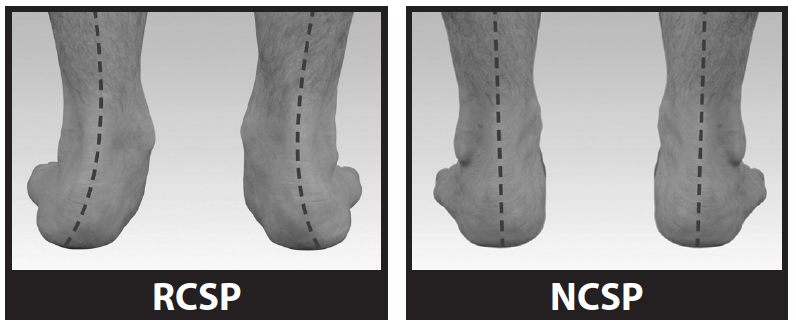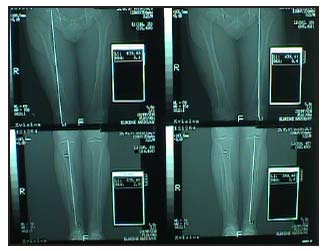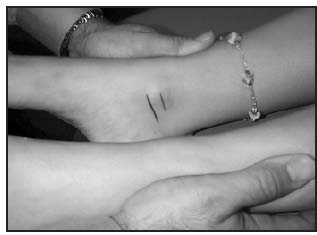Treating Leg Length Discrepancies
- Dr Abbie Clinics
- May 21, 2018
Short Leg Syndrome is a commonly unrecognised condition that often goes untreated. Even small discrepancies of only 4mm, if uncorrected, may over time set off a chain reaction of symptomology throughtout the body.
There are three types of short leg caused by inherited biomechanics, postural habits and or trauma:
- Structural Short Leg: when the measurement from the head of the femur to the lateral or medial Malleolus measures shorter on one side than the other.
- Functional Short Leg: when the measurement from the 2 same reference points are equal on both sides, but there still appears to be a short leg – usually due to a twist in the pelvis.
- Combination of Structural and Functional Short Leg.
Symptoms
Common symptoms may include:
- Headaches (including migraines)
- Blurred vision
- Jaw malalignment
- Neck and shoulder pain
- Back aches (including ‘slipped discs)
- Foot pain
- Ankle pain
- Knee pain
- Hip pain
Muscular, vascular and neurological systems may also be affected. Osteoarthritis in the joints, primarily on one side of the body and scoliosis (including idiopathic) are classic indicators of a leg length discrepancy and or twist in the pelvis.
Aetiology
1. Structural:
- Hereditary
- Trauma
2. Functional:
- Muscular imbalance due to activities such as poor training techniques.
- Habitual: i.e. lying on one side in bed.
- Trauma: soft tissue as opposed to bone.
Biomechanical Aetiology
Structural imbalance will cause jamming of the long leg into the hip socket. The foot will generally pronate excessively to ‘shorten’ the longer leg, and attempt to level the pelvis.
If the pelvis does not level as a result of the excessive pronation, the pelvis may twist or drop to one side – causing either a scoliosis or prolapse of the vertebral discs.
Unilateral tightness in the gluteal muscles may occur with posterior pelvic tilt and rotation, which in the case of a functional short leg has the effect of rotating the pelvis posteriorly – effectively causing increased rotation of the spine at L1 to L5 with resultant pain and discomfort.
There may be a tendency to repeatedly pull (overstretch) the same muscles even though it has been given sufficient time to heal.
Assessment
Although some physicians still utilise the old method of measuring for a short leg with a tape measure, current research clearly indicates the superiority of radiographic analysis over the old tape measure method.
There are many way sto measure leg length, two of the most reliable methods are:
- CT Scanogram: a radiographic tecnhique that measures the actual length of the tibia and fibula.
- NAS Technique (manual): a non-radiographic technique which is very accurate. The patient is placed in the supine position. The Practitioner balances the hips and pelvis, then marking the inferior aspect of the medial malleolus with a pen. Align the malleoli and rub together to compare the pen line markings, checking for any discrepancy between the two lines.
Treatment
In the case of a structural leg length discrepancy, a heel lift alone is not good enough, as the long leg will continue to pronate and cause upper body imbalance and compensations. Correction to the longitudinal arch of both feet and their biomechanics by prescribing an orthotic device is essential. The orthotic device will ensure the correction and realignment of the feet, and the addition of a heel lift on the shorter leg will prevent jamming in the hip, and prevent upper body compensations and resultant pain.

Conclusion
A leg length discrepancy as small as 5mm can have a great impact on a patient’s gait and posture. If a practitioner suspects a patient may suffer from a short leg, it is advisable to request a CT scan and then based on the results, prescribe an orthotic device, adding a heel lift if the CT scan indicates a significant leg length discrepancy – that is greater than 2mm.
N.B: Use of a heel lift alone, without a pair of orthotics will effectively correct the structural short leg. However, the use of an orthotic in addition to the heel lift will treat the long leg compensation and thus avoid jamming in the hip socket and lower back stress.
With structural leg length syndrome orthotics will correct the long leg compensatory pronation. The practitioner can then apply the heel lift to the orthotic for the short leg.
Never use only a single orthotic as this will cause the foundation to be unbalanced.




